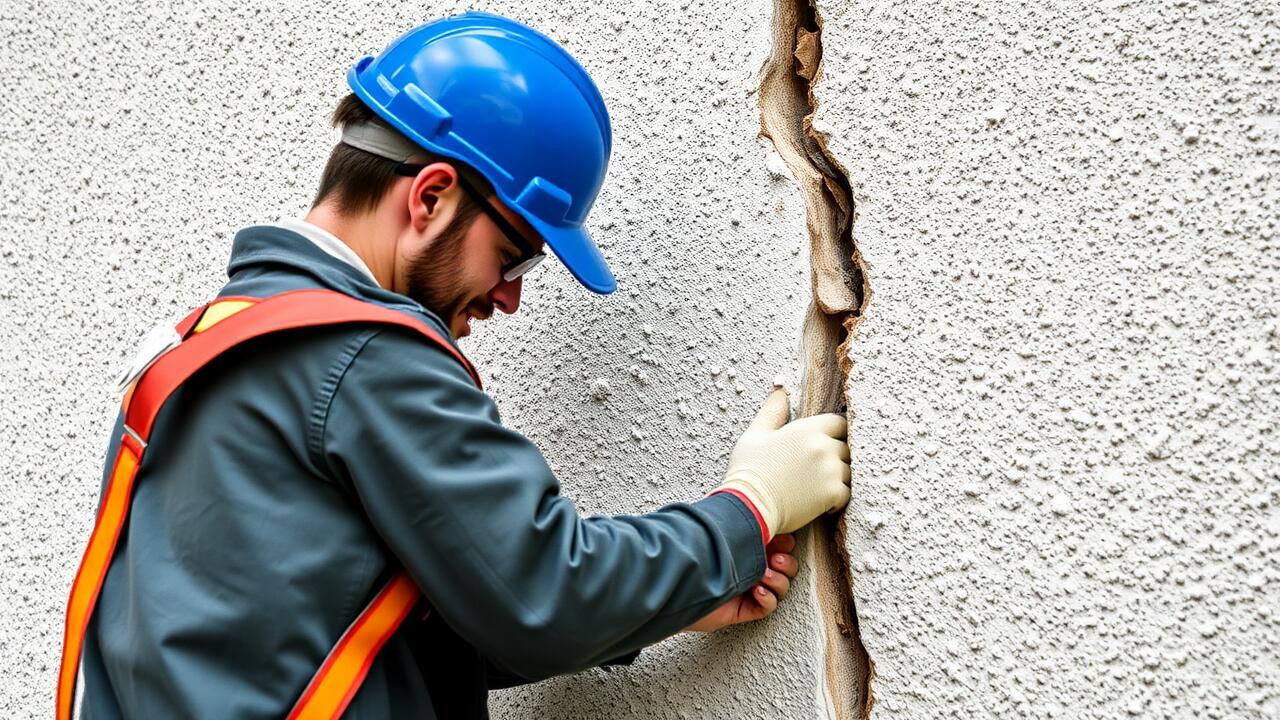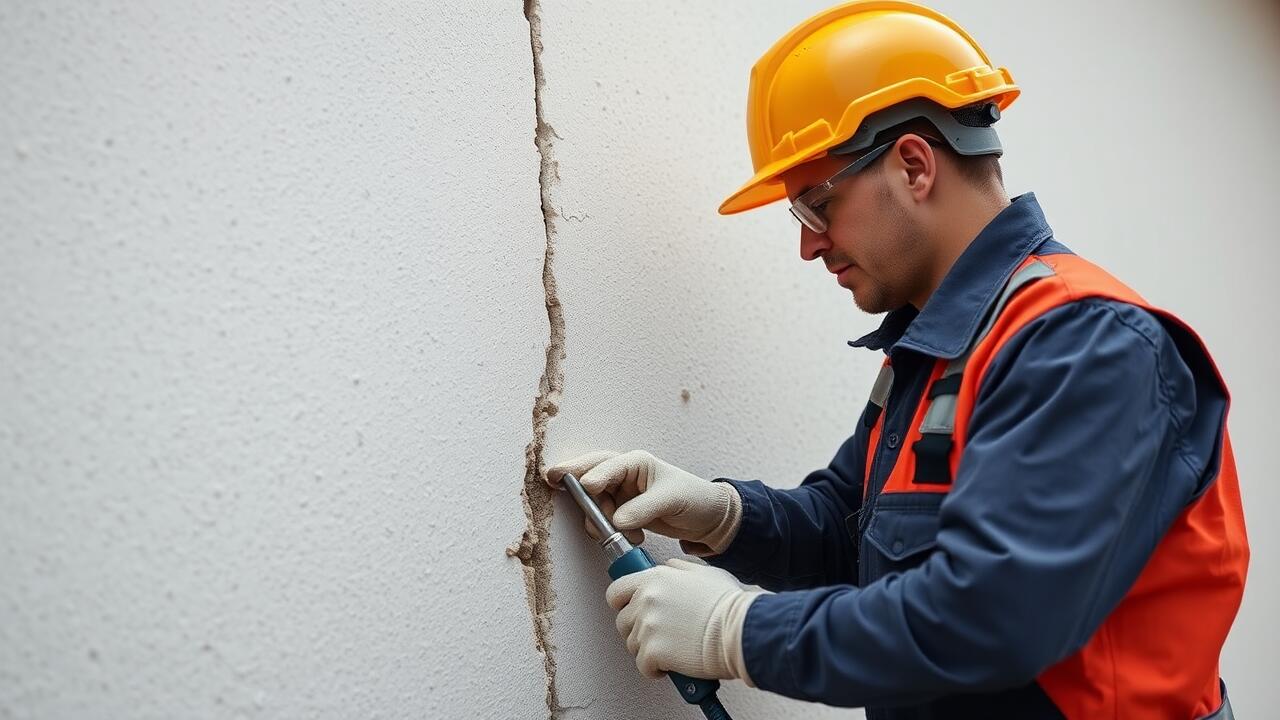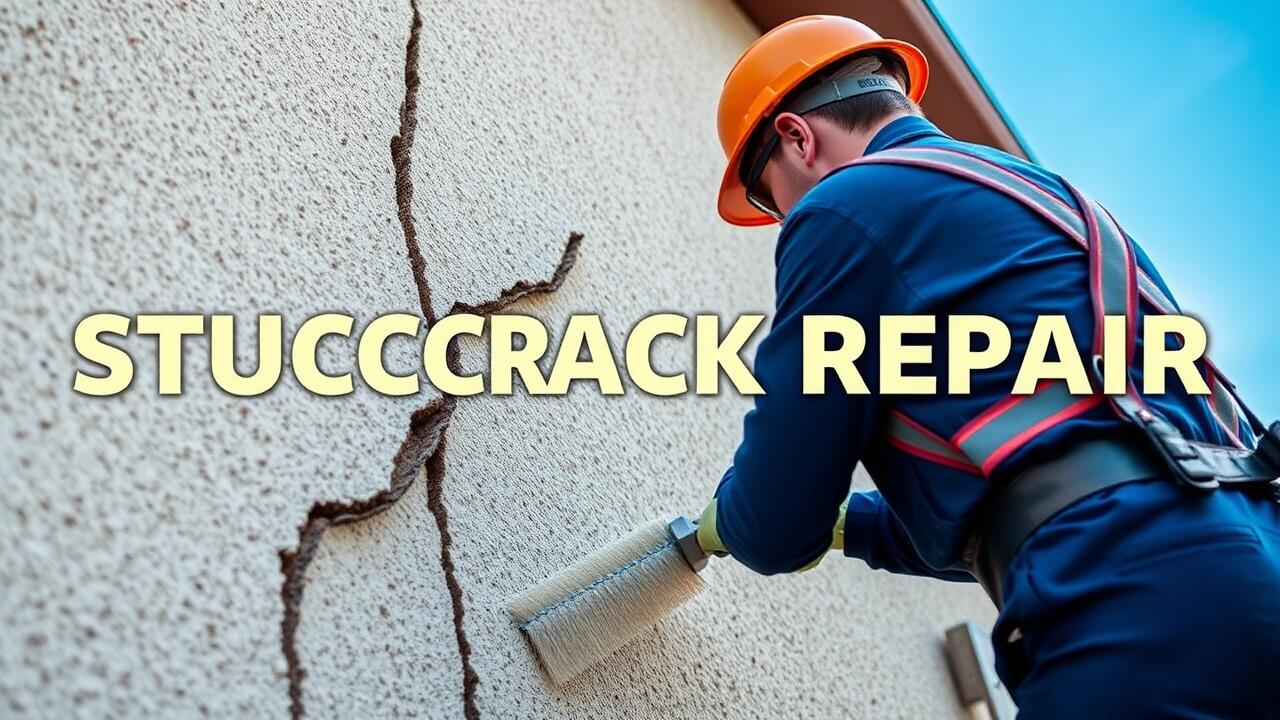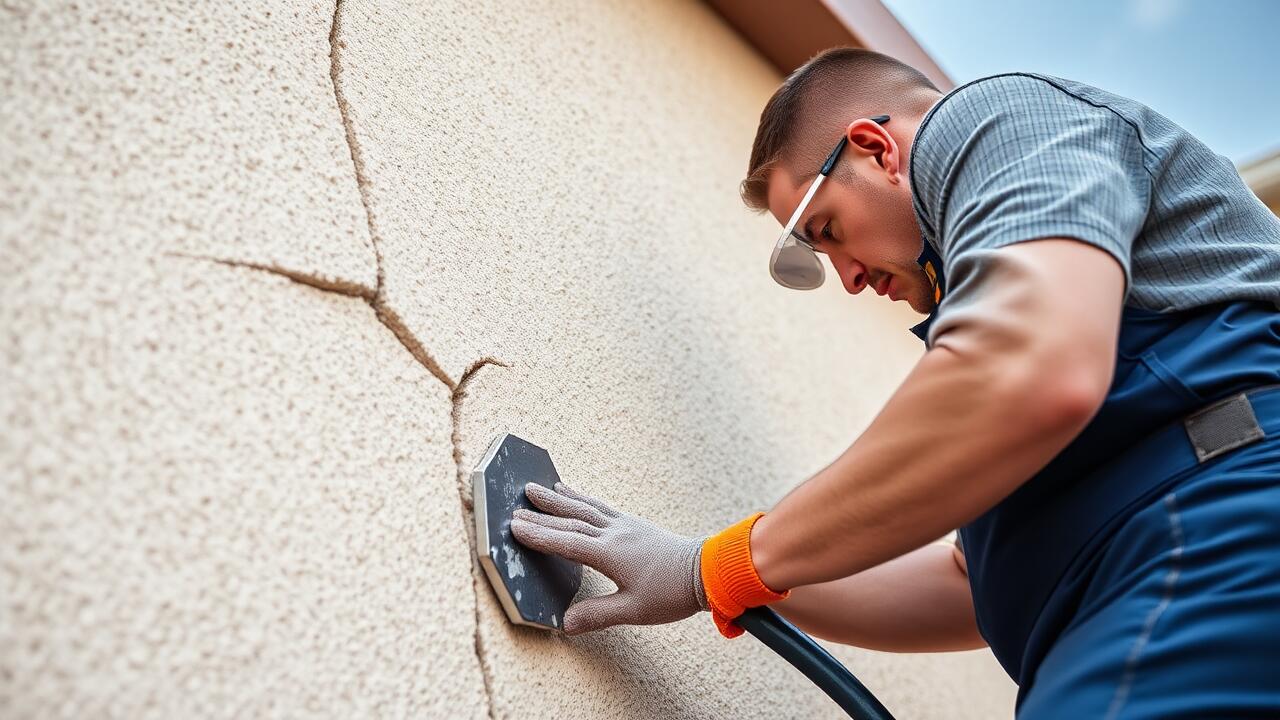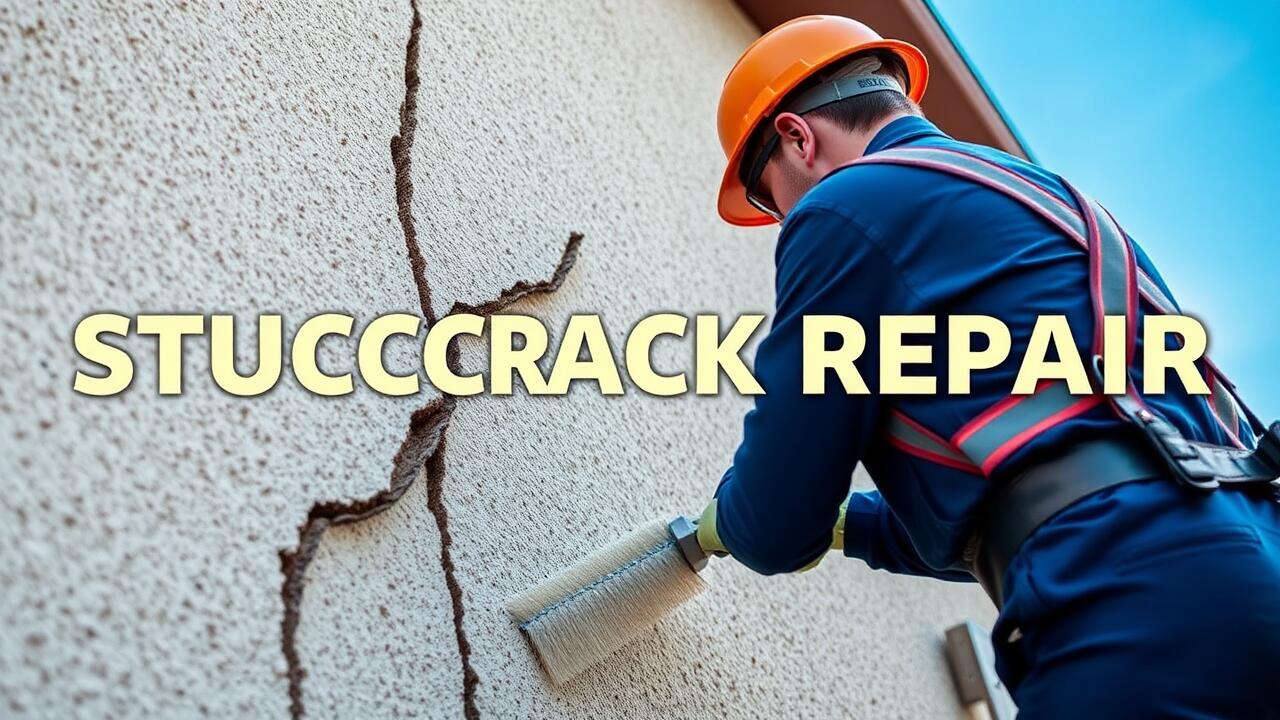
Maintenance and Longevity
Maintaining the integrity of stucco installations requires regular attention to sealants. Over time, weather conditions and environmental factors can degrade the effectiveness of these materials. Proper maintenance can prolong the lifespan of sealants and help prevent further cracking in the stucco. Homeowners should routinely inspect their stucco surfaces for any signs of wear or damage. Timely repairs can save costly reconstruction later on, making it crucial to address issues as they arise.
When searching for solutions, many might consider "Stucco Crack Repair near me" for quick assistance. A well-maintained sealant not only enhances the appearance of stucco but also provides critical protection against moisture intrusion and pest infiltration. Selecting high-quality sealants designed specifically for stucco can enhance longevity. Regular maintenance checks and prompt repairs will ensure that the stucco remains resilient against the elements and looking its best for years to come.
How to Extend the Life of Sealants
Regular maintenance is crucial in extending the life of sealants applied to stucco. Periodic inspections can help identify early signs of wear or damage. When cracks begin to form, addressing them promptly can prevent larger issues down the line. Keeping the stucco surface clean and free from debris also contributes to the sealant's durability. Routine cleaning with mild soap and water ensures that the sealant adheres properly and maintains its protective qualities.
If professional assistance is needed, searching for "Stucco Crack Repair near me" can yield reliable services. Experienced contractors can recommend suitable sealants and inspect the existing work for weaknesses. Proper installation techniques play a significant role in longevity, with experts knowing how to create a lasting bond between the stucco and sealant. By prioritizing maintenance and enlisting professional help when necessary, homeowners can significantly increase the lifespan of their stucco sealant.
Comparing DIY vs Professional Help
When addressing stucco crack repair, homeowners often face a decision between tackling the project themselves or hiring a professional. DIY sealant application can be a cost-effective option, empowering homeowners to engage in hands-on work. With numerous resources available online, many find they can successfully manage smaller repairs. However, this approach may lack the precision and quality that comes from experienced hands.
Conversely, hiring a professional for stucco crack repair can ensure a high-quality finish and longer-lasting results. Professionals typically have access to specialized tools and materials that may not be readily available to DIY enthusiasts. The expertise they bring may lead to a more efficient process, preventing potential issues from arising later. For those uncertain about their capabilities, searching for "Stucco Crack Repair near me" can yield local options to consider.
Pros and Cons of Each Approach
When considering a DIY approach for stucco crack repair, many homeowners appreciate the potential cost savings and the satisfaction of completing a project themselves. With the right tools and materials, repairs can be made efficiently. Online resources and tutorials can guide individuals through the process, making it accessible for those with a bit of determination. However, without proper experience, mistakes can lead to further damage, resulting in additional costs and time spent on rectifications.
On the other hand, hiring a professional ensures that the job is done correctly from the start. Pros bring expertise and specialized equipment, which can be especially beneficial for extensive cracks or underlying issues. This approach can save time and provide peace of mind, knowing the work is done by someone familiar with stucco repair. Some homeowners may find this route expensive, especially if they are on a tight budget. Searching for "Stucco Crack Repair near me" may yield various professionals, but evaluating their credentials and costs becomes crucial when making a final decision.
Environmental Considerations
When selecting a sealant for stucco repairs, it is essential to consider the environmental impact of the materials used. Traditional sealants can release volatile organic compounds (VOCs) into the atmosphere, contributing to air pollution and potential health issues. Eco-friendly alternatives often feature low or zero VOC content, making them safer for both the environment and occupants of the building. Searching online for "Stucco Crack Repair near me" can provide options that prioritize sustainability and durability.
Choosing environmentally responsible sealants not only benefits the ecosystem but can also enhance the longevity of repairs. Many eco-friendly products are designed to withstand harsh weather conditions while minimizing the need for frequent touch-ups or replacement. This efficiency can also lead to reduced long-term costs, as fewer materials and resources are required over time. Ultimately, selecting a sustainable option connects both personal maintenance goals and broader environmental objectives.
Choosing Eco-Friendly Sealants
When selecting eco-friendly sealants for stucco repair, it's essential to consider both the materials used and their environmental impact. Many manufacturers now offer products that are free from harmful solvents and volatile organic compounds (VOCs). These safer alternatives not only minimize exposure to hazardous substances but also contribute to better indoor air quality. Checking the ratings and certifications of these sealants can help ensure they're environmentally friendly while still providing effective protection against moisture and weathering.
Before making a final decision, homeowners may want to search for “Stucco Crack Repair near me” to identify local contractors who specialize in eco-conscious materials. Consulting with professionals allows for informed choices about sealants that align with green building practices. In addition, local experts can often provide insight into the most suitable products for specific climatic conditions, which can enhance both the durability of the repair and the overall sustainability of the home.
FAQS
What type of sealant is best for stucco cracks?
The best sealant for stucco cracks is a flexible acrylic or silicone-based sealant, as these materials can expand and contract with the stucco, providing a durable and weather-resistant seal.
How do I prepare stucco for sealing?
To prepare stucco for sealing, clean the area around the crack by removing any dirt, debris, or loose stucco. You can use a wire brush or a power washer. Ensure the surface is dry before applying any sealant.
Can I use regular caulk for stucco cracks?
While regular caulk can be used for small cracks, it is not recommended for larger or more significant cracks in stucco. It is better to use a specialized sealant designed for masonry or stucco to ensure a proper bond and flexibility.
How often should I reseal stucco cracks?
The frequency of resealing stucco cracks can vary based on environmental conditions and the quality of the sealant used. Generally, it is advisable to inspect your stucco annually and reseal as needed, especially if you notice signs of wear or deterioration.
Are there eco-friendly sealants available for stucco?
Yes, there are eco-friendly sealants available for stucco that are low in volatile organic compounds (VOCs) and made from sustainable materials. Look for products labeled as environmentally friendly or those that meet specific green building standards.
